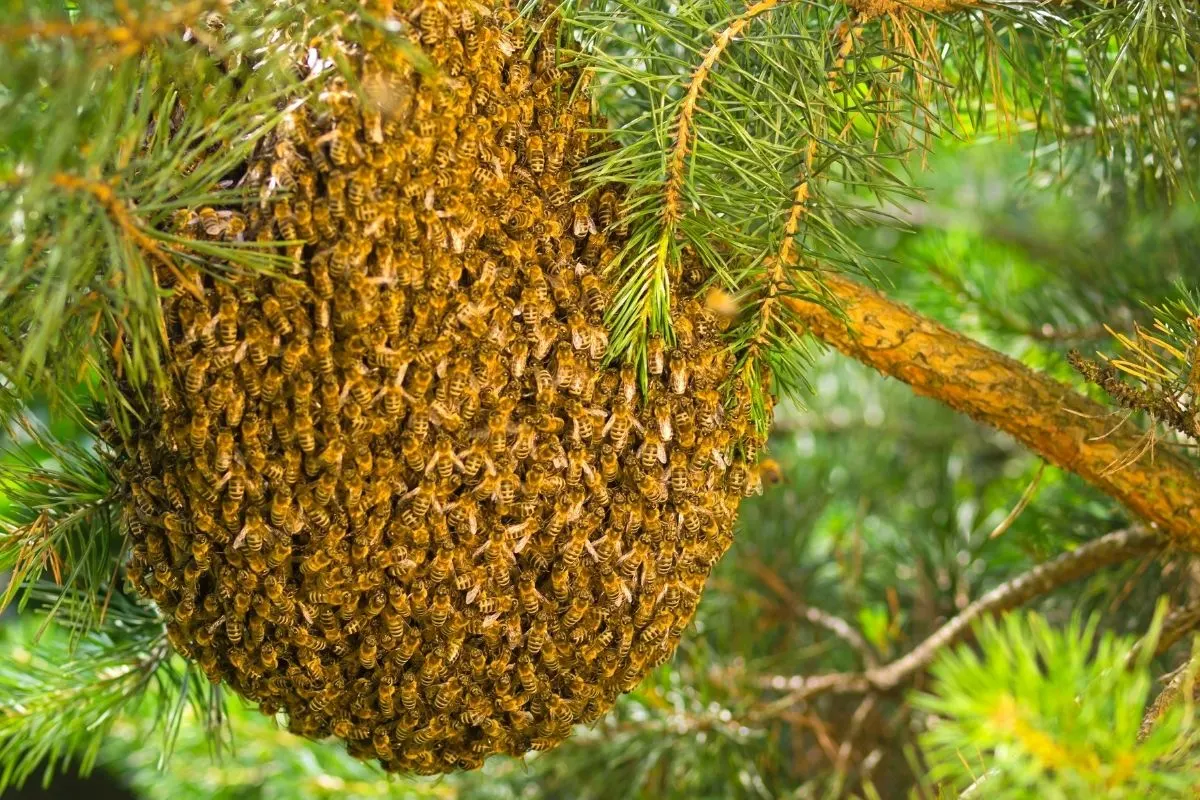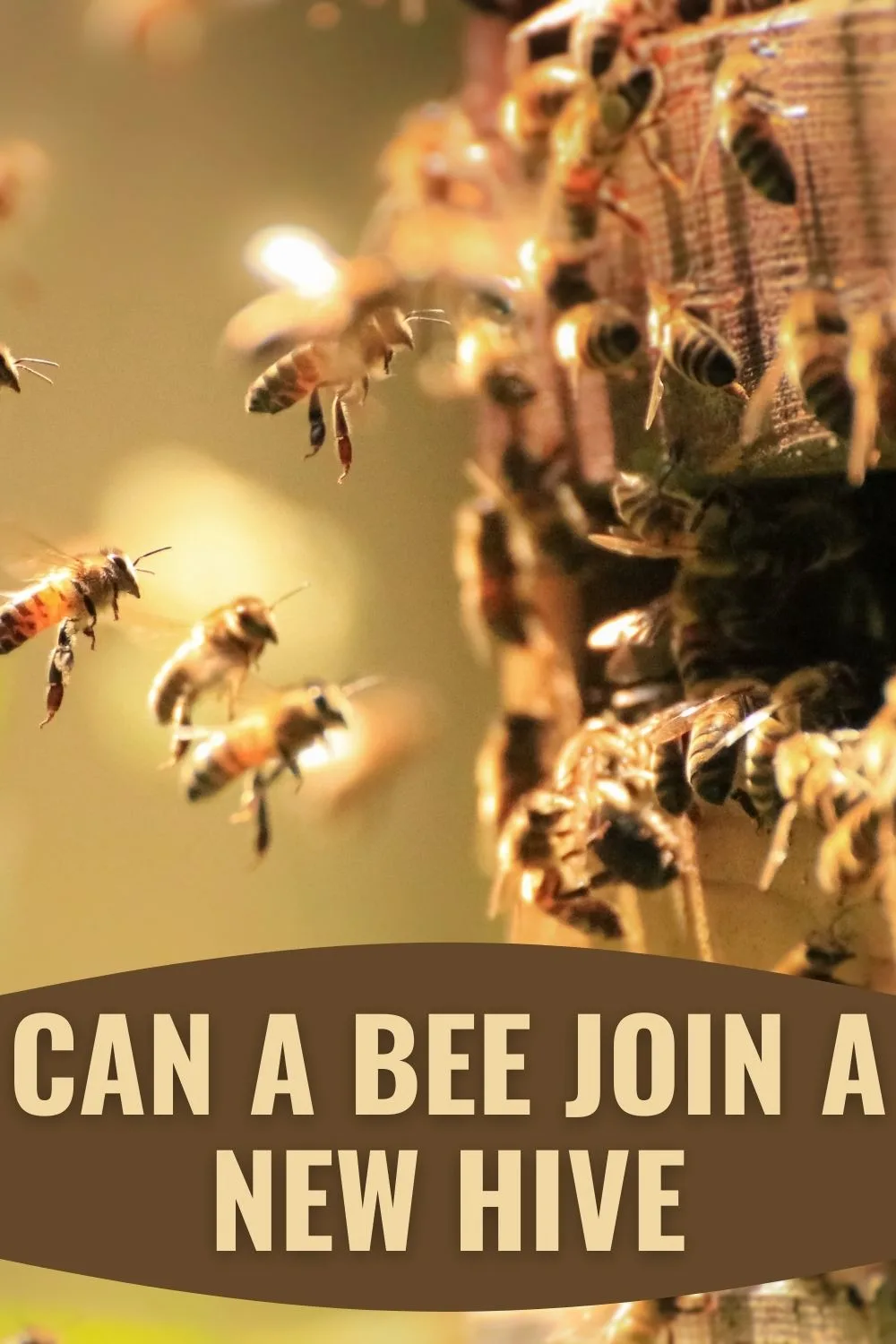The soft buzzing sound from the garden drew my attention to a little bee flying between the brightly colored flowers. I wonder why he was alone and if his hive was nearby or if he might be looking for a new home! Can a bee join a new hive?
A bee can join another hive, providing it brings nectar or pollen into the hive and is heavily doused with pheromones, which is the unique chemical signature from the original or interrelated hive. If the guard bees from the new colony recognize this signature, it may be allowed to enter.

- What do we know about the hive, and what are the reasons why bees would want to leave?
- Could it be that they could not find their way back to the colony, or did they have a natural sense of direction?
- Is it possible for bees to live outside the hive or only in social colonies?
- Can bees be easily moved from one colony to another, and what causes them to swarm?
Just a few of the questions we’ll answer below.
You might like this book: The Complete Guide to Beekeeping for Fun & Profit
What Is A Hive?
Bees live within a hive in the hollow of a tree, caves, or side of a building and wooden boxes made by man. The average colony contains 20,000 to 80,000 bees and has a set hierarchy structure headed by the Queen. Her vital purpose is to lay the eggs and secrete a pheromone to keep the colony united.
The Drone bees mate with the Queen, and the female Worker bees are the most productive. They are responsible for cleaning and feeding the entire hive, collecting the pollen and nectar, and making the wax.
Why do bees leave their hive?
When the hive becomes too large, a group of bees would leave to start a new colony with a new queen or an existing queen. This is known as swarming. These swarms usually occur in spring, and the bees will move a short distance away from the old hive and wait for messages from the scout (worker) bees. The bees could wait a few days while the scout bees search for the perfect location for a new hive.
Another reason is absconding when the Queen and the bees leave the hive without the brood. It is an indication that something is wrong within the hive.
Problems such as an infestation of parasites or mites, an ant invasion, or the hive being threatened by predators such as skunks could be a reason to abscond.
Poor ventilation, an uncomfortable hive, a lack of forage, and too much disturbance also could make them leave their homes.
Do bees get lost?
Bees have an outstanding ability to navigate by using the sun as a focal point and keeping to an angle to the sun. When out foraging for food, the bee will return to the hive by flying in a straight line.
They also have an amazingly accurate mental map of the areas within proximity of the hive, which they imprint after taking just a few first flights out of their colony. These remarkable navigating and recalling skills prevent bees from losing their way home.
Can bees survive outside the hive?
Around the world, many bees live their lives alone or in small communities with other solitary bees of the same species. Just like colonized bees, these solitary bees still do an amazing job of pollinating flowers and crops.
Most bees live outside the hive setting, but roughly 10% of bees spend their lives serving a Queen within a colony.
How to relocate bees from one hive to another
Beekeepers sometimes move a struggling and weaker bee colony into a larger and stronger hive. This new combined colony could flourish and grow into a thriving hive.
Bees should not be moved in all at once but should be gradually introduced to the new hive. ‘The “newspaper method” is a very popular method of slowly allowing the bees into a new colony.
When combining these hives, the Queen from the weaker colony is usually killed before the bees move to the new hive (though you might want to keep her and a few nurse bees until your bee integration is complete; that way if something happens to the queen bee, you can introduce this one).
So what is this newspaper method?
Start by using a bee smoker to calm the bees. Then place a sheet of newspaper on top of the stronger hive separating the two colonies. Make some slits in the newspaper sheet, and then place the brood box of the weaker hive on top.
The odors from the two colonies will eventually mingle, and the bees will chew through the paper and slowly be introduced to each other. The process takes about a week until the newspaper has disappeared and a new colony has emerged.
How to move a swarm of bees to a hive

Swarms are easy for beekeepers to catch and relocate as they have not settled or re-built their hive. These bees are not violent as they do not have a home or a brood to protect, but it’s always good to wear protective gear, just in case.
Usually, they can be found resting in trees, lampposts, or sides of buildings, and a beekeeper can easily scoop the bees by hand and shake them into a container.
The Queen must also be captured so that the other bees will follow suit. It could take some time! The bees are then placed into a new hive and are left undisturbed for about a week to settle and build their combs.
In conclusion, can a bee join a new hive?
Although a bee can join another colony by having a recognized chemical signature and bringing pollen and nectar as a gift, it is more easily accepted into the hive if assisted by the beekeeper.
Bees possess a natural sense of direction and are amazing at finding their way home. Due to problems within the hive, they leave the colony by absconding or swarming. Thankfully, beekeepers are adept at collecting these swarms and moving them into new hives.
Caring for these remarkable bees is vital as they play an important role in our volatile ecosystem. Without bees, natural pollination of crops cannot occur, which is essential for our food supply and survival. Be kind to the bees, plant a garden to produce pollen and nectar, and ensure that beehives flourish.

